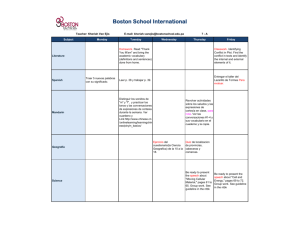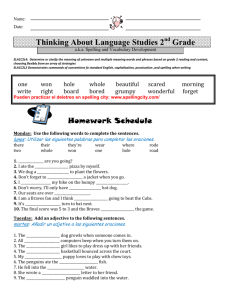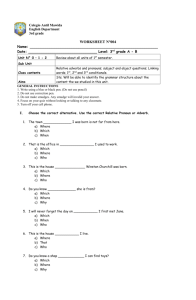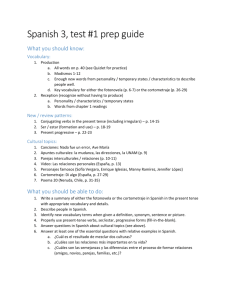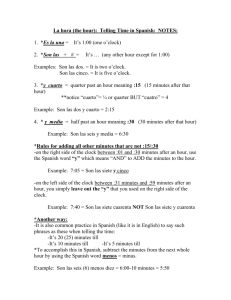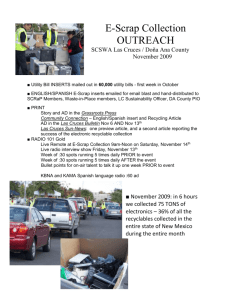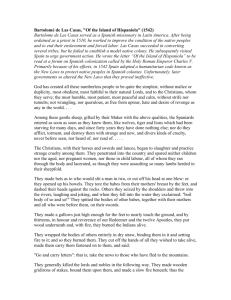Albemarle County Public Schools
advertisement
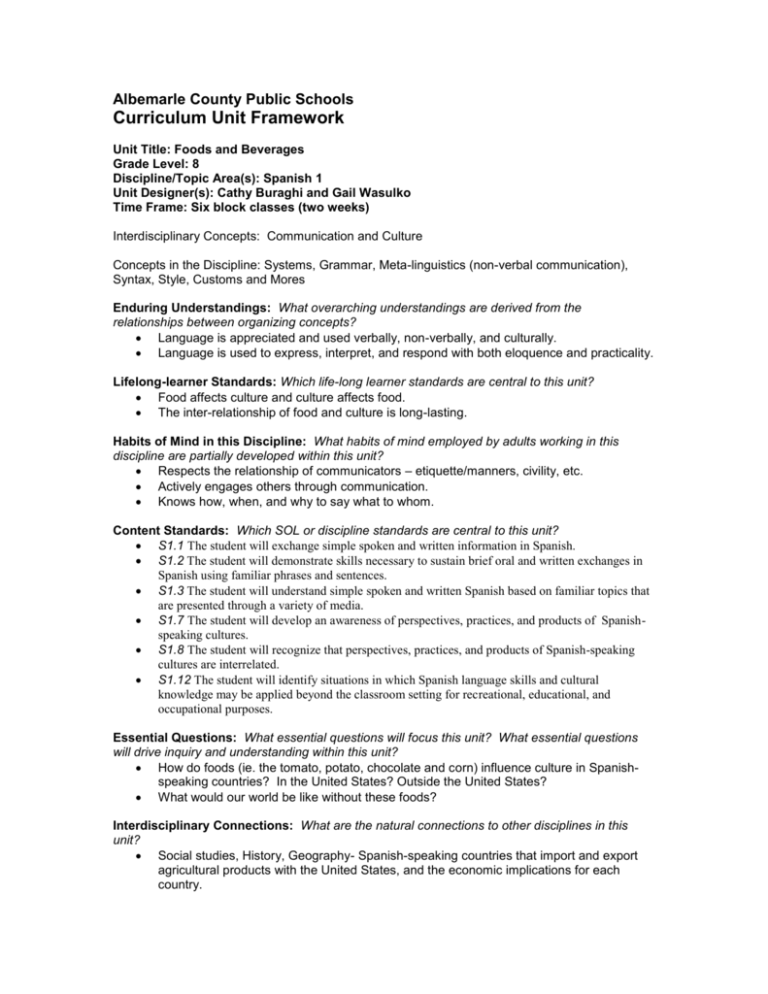
Albemarle County Public Schools Curriculum Unit Framework Unit Title: Foods and Beverages Grade Level: 8 Discipline/Topic Area(s): Spanish 1 Unit Designer(s): Cathy Buraghi and Gail Wasulko Time Frame: Six block classes (two weeks) Interdisciplinary Concepts: Communication and Culture Concepts in the Discipline: Systems, Grammar, Meta-linguistics (non-verbal communication), Syntax, Style, Customs and Mores Enduring Understandings: What overarching understandings are derived from the relationships between organizing concepts? Language is appreciated and used verbally, non-verbally, and culturally. Language is used to express, interpret, and respond with both eloquence and practicality. Lifelong-learner Standards: Which life-long learner standards are central to this unit? Food affects culture and culture affects food. The inter-relationship of food and culture is long-lasting. Habits of Mind in this Discipline: What habits of mind employed by adults working in this discipline are partially developed within this unit? Respects the relationship of communicators – etiquette/manners, civility, etc. Actively engages others through communication. Knows how, when, and why to say what to whom. Content Standards: Which SOL or discipline standards are central to this unit? S1.1 The student will exchange simple spoken and written information in Spanish. S1.2 The student will demonstrate skills necessary to sustain brief oral and written exchanges in Spanish using familiar phrases and sentences. S1.3 The student will understand simple spoken and written Spanish based on familiar topics that are presented through a variety of media. S1.7 The student will develop an awareness of perspectives, practices, and products of Spanishspeaking cultures. S1.8 The student will recognize that perspectives, practices, and products of Spanish-speaking cultures are interrelated. S1.12 The student will identify situations in which Spanish language skills and cultural knowledge may be applied beyond the classroom setting for recreational, educational, and occupational purposes. Essential Questions: What essential questions will focus this unit? What essential questions will drive inquiry and understanding within this unit? How do foods (ie. the tomato, potato, chocolate and corn) influence culture in Spanishspeaking countries? In the United States? Outside the United States? What would our world be like without these foods? Interdisciplinary Connections: What are the natural connections to other disciplines in this unit? Social studies, History, Geography- Spanish-speaking countries that import and export agricultural products with the United States, and the economic implications for each country. Pre-Assessment(s): What pre-assessment(s) and rubrics that define quality will be used to determine students’ prior knowledge and/or misconceptions related to the essential knowledge, understanding, skills, and vocabulary in this unit? How will pre-assessment data be used to inform instruction? Brainstorm the Spanish food and beverage terms students already know via think-pairshare groups. Each group should contribute to whole class discussion. Classify the foods and beverages by meal. Compare and contrast the foods/beverages/meals by cultures through whole group discussion. (The strategies above will define the knowledge base to be expanded.) Interview fellow students using me/te gusta/n and me/te encanta/n with previously learned vocabulary to determine proficiency. Select the appropriate form of the verb (gusta or gustan, encanta or encantan) to agree with the object to determine proficiency. Essential Knowledge, Understanding, Skills, and Vocabulary Students will know: What ideas, concepts, information, and facts will students be able to recall or recite? Students will be able to recall and identify food and beverage vocabulary. Students will understand: What ideas, concepts, information, and facts will students be able to explain, interpret, manipulate or apply in new situations? Students will identify food by culture and by meal. Students will select food and use essential food vocabulary in simple present tense sentences in a real life situation such as a restaurant. Students will be able to: What skills will students demonstrate? express their likes and dislikes of different foods and beverages in written and spoken form; ask each other their food and beverage preferences; put foods together to form daily meals; discuss origins of several foods; discuss cognates and word origin; compare how certain foods are used in different meals and in various cultures, including traditional and holiday meals; explain the symbolism behind the traditional and holiday meals. Vocabulary: What terms must students know and use? Me gusta/n, Me encanta/n, Quisiera, tomar, comer, beber, pedir, servir, camarero/a, mesero/a,por favor, gracias, and related meal and food vocabulary as follows: el desayuno la comida La carne el almuerzo la cena Las verduras Las frutas Las grasas El pollo El bistec El pescado Los perritos calientes Las hamburguesas El jamón El tocino Las salchichas La cebolla Los guisantes Las papas/patatas Las papas fritas Las judias verdes La lechuga Las zanahorias La ensalada Las fresas Las cerezas Las uvas Las piñas Las bananas Los plátanos Las naranjas Las manzanas El tomate La pera La mantequilla Los postres Las bebidas La comida Los dulces El bizcocho El pastel El helado Los churros Las galletas El agua La leche El café El té El té helado Los jugos (de…) Los refrescos Los condimientos El azúcar El sal La pimienta La sopa El taco La enchilada Los huevos El queso El sándwich El burrito El yogur El pan y los cereales El arroz Los espaguetis La pizza El pan El pan dulce El cereal Summative Assessment(s): What summative assessment(s) and scoring guides will be used to determine if students have mastered the essential knowledge, understanding, skills, and vocabulary in this unit? At what levels of Bloom’s Taxonomy will students demonstrate mastery? Audio Quiz –Refer to Writing, Audio & Video Workbook-Realidades I-p.55, Audio CDTrack 12 Bloom’s: Knowledge, Comprehension, Application SOL’s: S1.3 Interview (Oral and Written Quiz)-Use handout-Teacher’s Resource Book-p. 142-143 Bloom’s: Knowledge, Comprehension, Application SOL’s: S1.1, S1.2, S1.3 Project-Students will create a menu plan for their respective families for one day using typical American food. Students will select a Spanish-speaking country and create a second menu plan which is culturally authentic. Both menus should be in Spanish. Write a brief summary in English which compares and contrasts the two menus. Bloom’s: Knowledge, Comprehension, Application, Analysis, Evaluation, Synthesis SOL’s: S1.2. S1.3 Reading Comprehension and Guided Responses-Use story,”La Buena Comida de todos los días”-p.42-TPR Stories-Realidades. Bloom’s: Knowledge, Comprehension, Application SOL’s: S1.3 Research-select,compare and contrast a traditional/holiday meal from a Spanishspeaking country with a traditional/holiday American meal. It must be written in Spanish. Bloom’s: Knowledge, Comprehension, Application, Analysis, Evaluation, Synthesis SOL’S: S1.7, S1.8, S1.12
